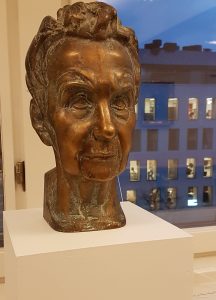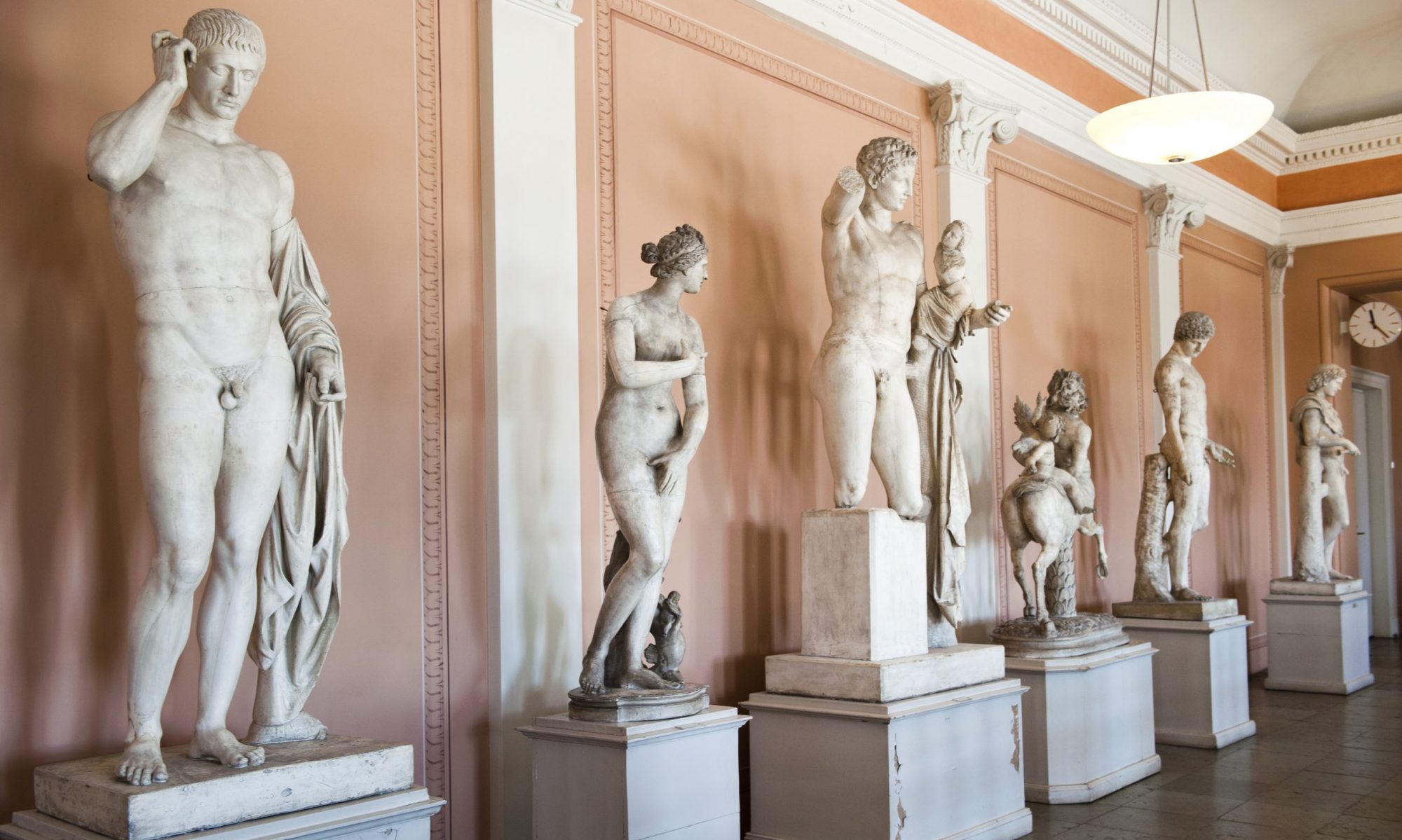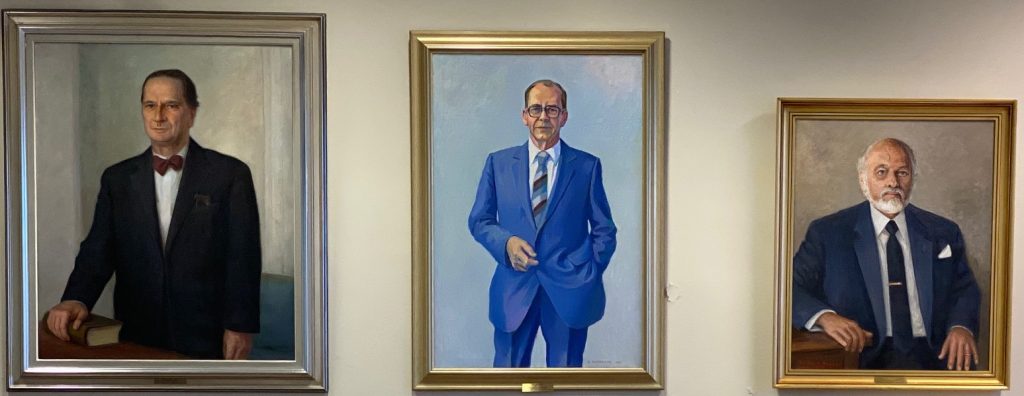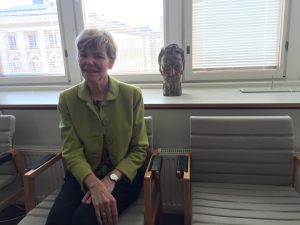On the windowsill of the faculty room on the 5th floor of Porthania sits the bust of Professor Inkeri Anttila. We interviewed an emeritus professor of criminal law, Raimo Lahti:
Who was Inkeri Anttila?
Inkeri Anttila was a trailblazer in criminal law in many ways. She was the first woman in Finland to obtain a doctorate in law (1946), the first woman to become a professor of law (1961) and the first female Minister of Justice (1975). Furthermore, she oversaw the expansion of criminal law within the faculty into criminology and criminal policy and advanced criminological research at the Faculty of Criminology (later OPTULA and KRIMO).

Lastly, Anttila had significant influence in changing attitudes in criminal policy during the 1970s. As a consequence, the values and decision-making criteria underlying criminal policies were reassessed and modified becoming more rationality and humane oriented and being defined in terms of impact, value, and consent. Anttila drafted and implemented these changes during her term ministerial term and as vice-chairman for the renewal project of the Finnish Criminal Code (1980-1997). (C.f. Raimo Lahti (toim.), ”Inkeri Anttila (1916-2013). Rikosoikeuden uudistajan ammatillinen ura ja vaikutus, Forum Iuris 2016).
Inkeri Anttila was also active internationally. Was she more well known internationally or in Finland?
Inkeri Anttila’s career was very focused on the international dimension and she was a central figure in developing criminal law at the UN and the EU, as well as in various Nordic institutions. Her numerous awards and recognitions speak to her international profilShe was well-regarded and respected on the international stage, reflected in the numerous awards and recognitions she received (for example the American Society of Criminology’s Sellin-Glueck award in 1983, the UN General Secretary’s award for advancing international criminal law in 1992, and the Lifetime Achievement Award from the European Society of Criminology in 2011). In addition, she held numerous prestigious positions at various international organisations. Her last major position was as the head of the UN-affiliated European Institute for Criminal Prevention and Control (Heuni) 1982-1986. Since her appointment as professor, I believe Anttila to have been equally respected abroad and domestically also as a significant figure in criminal law research and criminal policy.
Did you take part in fundraising efforts for the bust? Could you tell us about that process? What did Inkeri Anttila think of the project?
As far as I am aware, Inkeri Anttila regarded the project positively and with a sense of humour, including the four works dedicated to her and her 70th birthday party in 1986. She did not, however, want her portrait to be painted. She agreed to a black-and-white photo and these images were made for her to archive at important institutes (Porthania, OPTULA, and Heuni). Anttila’s daughter, Liisa Elovainio, got her to agree to model for a bust by the Estonian sculptor, Edgar Viiekselä. That bust was given to the principal of the University Kari Raivio on Anttila’s 80th birthday 28.11.1996. I started the fundraising campaign to which Anttila’s students, colleagues, and friends donated. Anttila herself shunned the expression on the bust but Viies assured her of its dignity. Since Anttila’s 80th birthday, many law associations and other parties began to award medals with Anttila’s image made by Toivo Jaatinen.
How did Inkeri Anttila regard gender within academia? Did she identify herself as a feminist?
An accurate answer would require a straightforward definition of feminism. I’ll answer by quoting first two persons close to Anttila. The first is her daughter, Liisa Elovainio, who said that “in both her professional life and in raising her daughter, Inkeri believed that women’s equality is advanced best by a woman doing her job well. By doing so, she demonstrates equality in practice and thereby encourages others. The word ‘feminism’ was not used at home. Inkeri seldom participated in women’s organisations.” Pertti Hallikainen described Anttila in 1996 not as a women’s cause advocate but as a woman with an agenda. In a 1986 interview, Anttila did not report to have experienced discrimination as a student, nor does she express bitterness to have been side-lined in her academic endeavours in favour of male candidates.
Similar to Hallikainen, I regard Anttila to have not been an ideological feminist, but promoting gender equality was natural to her both at home and in her profession. For example, she encouraged male and female peers equally to pursue research and the legal profession. Pertti Pesonen in his memoir “Anttila, the Woman of the Decade” (1996), considers women of this age group as breakers of the glass ceiling due to their skirts – and boundaries were crossed with knowledge, skill, energy, and organisational skills.
You have had a long career at the Faculty of Law at the University of Helsinki. Can you think of a colleague whose bust or portraits you would like to see in Porthania?
First of all, I regard the memory of colleagues and researchers to best be preserved through their academic literature and other productions being valued in research. I thought it important, however, to celebrate Inkeri Anttila by producing a publication honouring her work by collecting her most important English articles with the help of Patrik Törnudd. Portraits, statues, and busts are of course important visual and personified forms of remembering as they also depict the chain of development from generation to generation of legal professionals. Portraits of female professors are rarer than those of their male colleagues even though the increased status and number of women within the faculty should also be made apparent visually in university spaces. In the last decades, in my opinion, the women who have had esteemed academic careers at the University of Helsinki are Pirkko-Liisa Haarmann, Kirsti Rissanen, and Pirkko K. Koskinen.

Original text in Finnish: https://blogs.helsinki.fi/nakymattoman-juristin-muotokuva/
Translations by Katariina Flinck.
Prof Raimo Lahti has written an In Memoriam of Inkeri Anttila, accessible here: www.cambridge.org/core/journals/international-annals-of-criminology/article/inkeri-anttila-19162013-in-memoriam/25E23693EA823A37C275AE223DBA6A8E
Lahti, Raimo. 2017. “Inkeri Anttila (1916-2013) In Memoriam”. International Annals of Criminology, 51(1-2): 175-178. Cambridge University Press. DOI: 10.1017/S0003445200000118



